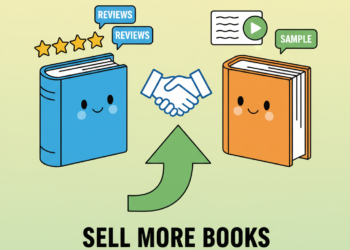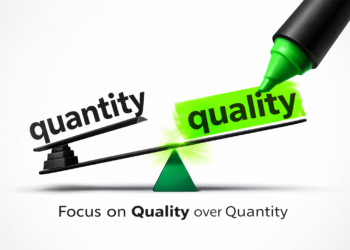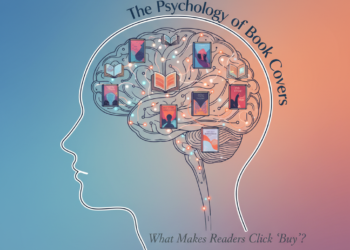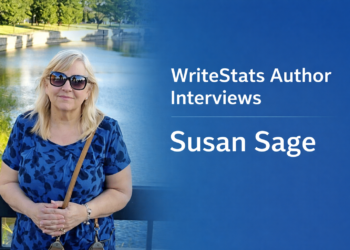If you’re wondering how to make an audiobook, you’re not alone. More authors than ever are bringing their stories to life in audio form, and for good reason. The audiobook market has experienced significant growth in recent years, with global revenues projected to reach $35.5 billion by 2030 and U.S. sales already surpassing $2 billion annually. This growth means opportunity, but also competition.
So how do you, as an author, decide whether to create an audiobook, and what’s the best way to go about it? Let’s break it down into steps, explore different author paths, and share actionable tips along the way.
(And if you want more background before diving in, check out our blog Audiobook Market Overview: Why Authors Should Pay Attention. It shows just how important this format has become. You might also revisit 93% of Indie Authors Are Happy They Self-Published, the same benefits of independence and control apply to audiobooks, too.)
Step 1: Plan Your Audiobook
Before pressing “record,” start with a clear plan.
- Define your goals: Do you want extra income, more exposure, or simply another way for fans to enjoy your work?
- Set a budget and timeline: Audiobooks require both money and time. Knowing your limits upfront will guide the rest.
💡 Tip: Write down your “must-haves” (professional sound, fast turnaround, or total control). This will keep you focused when faced with choices later.
Step 2: Choose Who Will Narrate
Your narrator will shape the listener’s entire experience.
- Narrate yourself: Authentic, cost-saving, and personal, but requires patience, practice, and gear.
- Hire a narrator: Professional, polished, and engaging, but adds cost.
💡 Tip: Record a short passage yourself and then listen to a professional narrator’s sample. Which one captures the feel you want for your book? That comparison alone can clarify your decision.
Step 3: Record and Edit
Recording is where your audiobook takes shape.
- Home setup: Budget-friendly, but you’ll need a good microphone, interface, and soundproofing.
- Professional studio: More expensive, but provides top-notch quality.
After recording, every audiobook needs:
- Editing & Proofing to cut out mistakes, fix pacing, and catch errors.
- Mastering to balance sound and ensure it meets industry standards.
💡 Tip: Even if you record at home, consider outsourcing editing. Listeners notice background noise or uneven pacing faster than you think.
Step 4: Package It Professionally
Your audiobook isn’t just audio; it’s also presentation.
- Cover Art: Adapt your existing book cover for audiobook dimensions.
- Metadata: Make sure all details (title, author, narrator, length) are correct.
💡 Tip: A well-designed cover makes your audiobook stand out in crowded marketplaces. If you can, invest in a professional tweak for the audio format.
Step 5: Distribute and Promote
Now, where will you sell your audiobook?
- Exclusive Distribution (e.g., Audible/ACX): Higher royalties but limited to one ecosystem.
- Wide Distribution (e.g., Findaway Voices): Your book appears on multiple platforms worldwide, though royalties per platform may be smaller.
💡 Tip: Promote with short audio samples. A 1–2 minute excerpt shared on social media can hook potential listeners much like a movie trailer.
Different Author Paths
Every author’s situation is unique, but most fall into one of these categories:
1. The Indie Hustler (budget-conscious, wants control)
- Approach: Record yourself at home, then hire an editor.
- Pros: Low cost, total control, higher royalties.
- Cons: Steep learning curve, time-intensive.
- Actionable Tip: Start with one book to test the waters, then reinvest profits into better gear.
2. The Quality-Seeker (moderate budget, wants polish)
- Approach: Hire a narrator, outsource editing, distribute widely.
- Pros: Professional sound, stronger reviews, less stress.
- Cons: Higher upfront costs.
- Actionable Tip: Consider a royalty-share contract with narrators to reduce initial expenses.
3. The Time-Saver (busy, wants it done quickly)
- Approach: Outsource everything, often with exclusive distribution deals.
- Pros: Fast, professional, minimal effort.
- Cons: Less control, possible royalty trade-offs.
- Actionable Tip: Check contracts carefully, make sure you still own your audio rights.
What It Costs to Make an Audiobook
Think of costs as building blocks; you can add or remove pieces depending on your priorities:
- Narration: $100–$500 per finished hour (a 7-hour book = $700–$3,500).
- Studio Time: $50–$150/hour (if not recording at home).
- Editing & Proofing: $60–$150 PFH.
- Mastering: $30–$75 PFH.
- DIY Equipment: $200–$500+ for a mic, interface, and soundproofing.
💡 Quick Example: A 70,000-word novel (≈7 finished hours) could cost $2,000–$3,500 with a pro narrator, or a few hundred if you do most yourself.
Your Pre-Launch Checklist
Before you hit “publish,” run through this list:
- Set a clear budget. Know your financial limits.
- Listen to other audiobooks in your genre for inspiration.
- Decide narration style (first-person, character voices, accents).
- Secure quality recording, whether home or studio.
- Budget for editing & proofing (don’t skip it).
- Research distribution options and royalty structures.
- Plan your marketing; schedule teasers, share samples, and gather early reviews.
Pros and Cons to Keep in Mind
Pros:
- Reaches new audiences (commuters, multitaskers, audio-first readers).
- Creates another income stream.
- Boosts discoverability and brand credibility.
Cons:
- Upfront costs (time or money).
- Risk of poor reviews if the audio quality is weak.
- Royalty splits can be confusing or restrictive.
Make It Easier with Booktips
If all of this feels like a lot to juggle, don’t worry! At Booktips, we help authors turn their books into professional-quality audiobooks without the stress. Our team can manage the heavy lifting, allowing you to focus on writing your next book.
👉 Explore our service here: Make Your Book Audible
With professional support, you can save time, ensure quality, and get your audiobook out into the world faster!
Final Thoughts
Learning how to make an audiobook doesn’t have to be overwhelming. Break it into steps and you’ll have a clear path forward. The key is aligning your choices with your goals and resources.
Whether you’re narrating at home with a $200 mic or hiring a professional voice actor, what matters most is delivering a listening experience that does justice to your story.
And remember: the audiobook market is only growing. The sooner you step in, the sooner your words can be heard.









